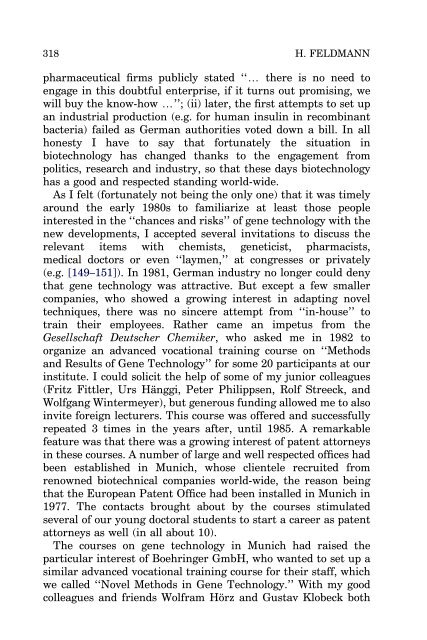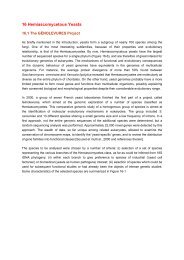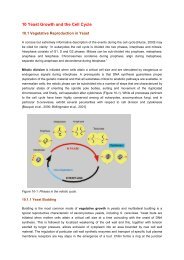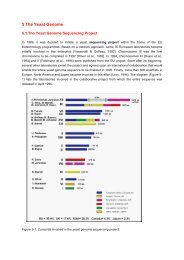A Life with Yeast Molecular Biology - Prof. Dr. Horst Feldmann
A Life with Yeast Molecular Biology - Prof. Dr. Horst Feldmann
A Life with Yeast Molecular Biology - Prof. Dr. Horst Feldmann
You also want an ePaper? Increase the reach of your titles
YUMPU automatically turns print PDFs into web optimized ePapers that Google loves.
318<br />
H. FELDMANN<br />
pharmaceutical firms publicly stated ‘‘y there is no need to<br />
engage in this doubtful enterprise, if it turns out promising, we<br />
will buy the know-how y’’; (ii) later, the first attempts to set up<br />
an industrial production (e.g. for human insulin in recombinant<br />
bacteria) failed as German authorities voted down a bill. In all<br />
honesty I have to say that fortunately the situation in<br />
biotechnology has changed thanks to the engagement from<br />
politics, research and industry, so that these days biotechnology<br />
has a good and respected standing world-wide.<br />
As I felt (fortunately not being the only one) that it was timely<br />
around the early 1980s to familiarize at least those people<br />
interested in the ‘‘chances and risks’’ of gene technology <strong>with</strong> the<br />
new developments, I accepted several invitations to discuss the<br />
relevant items <strong>with</strong> chemists, geneticist, pharmacists,<br />
medical doctors or even ‘‘laymen,’’ at congresses or privately<br />
(e.g. [149–151]). In 1981, German industry no longer could deny<br />
that gene technology was attractive. But except a few smaller<br />
companies, who showed a growing interest in adapting novel<br />
techniques, there was no sincere attempt from ‘‘in-house’’ to<br />
train their employees. Rather came an impetus from the<br />
Gesellschaft Deutscher Chemiker, who asked me in 1982 to<br />
organize an advanced vocational training course on ‘‘Methods<br />
and Results of Gene Technology’’ for some 20 participants at our<br />
institute. I could solicit the help of some of my junior colleagues<br />
(Fritz Fittler, Urs Hänggi, Peter Philippsen, Rolf Streeck, and<br />
Wolfgang Wintermeyer), but generous funding allowed me to also<br />
invite foreign lecturers. This course was offered and successfully<br />
repeated 3 times in the years after, until 1985. A remarkable<br />
feature was that there was a growing interest of patent attorneys<br />
in these courses. A number of large and well respected offices had<br />
been established in Munich, whose clientele recruited from<br />
renowned biotechnical companies world-wide, the reason being<br />
that the European Patent Office had been installed in Munich in<br />
1977. The contacts brought about by the courses stimulated<br />
several of our young doctoral students to start a career as patent<br />
attorneys as well (in all about 10).<br />
The courses on gene technology in Munich had raised the<br />
particular interest of Boehringer GmbH, who wanted to set up a<br />
similar advanced vocational training course for their staff, which<br />
we called ‘‘Novel Methods in Gene Technology.’’ With my good<br />
colleagues and friends Wolfram Hörz and Gustav Klobeck both







